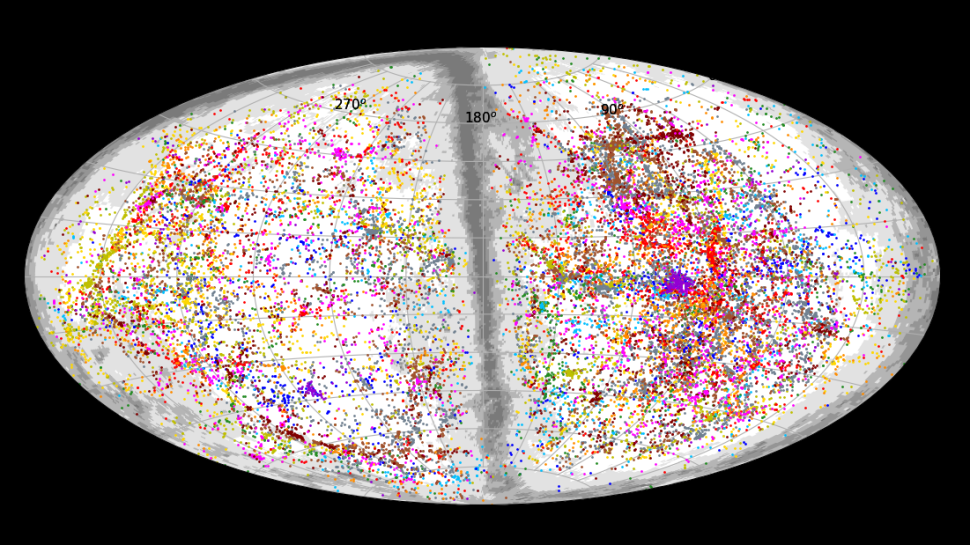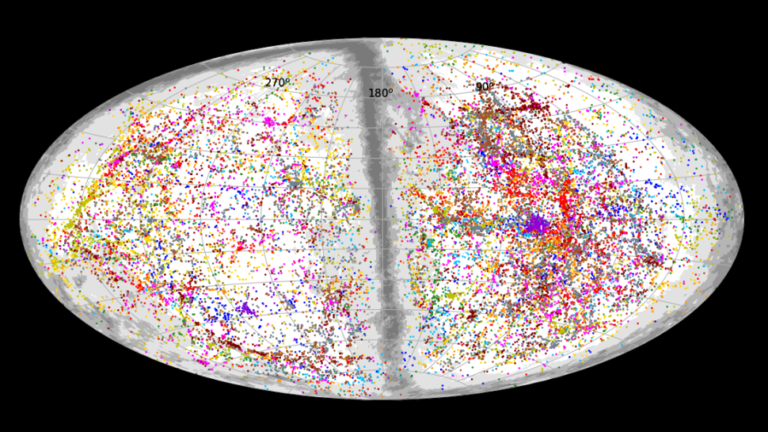Largest-ever map of 56,000 galaxies is demystifying the universe’s expansion.
The cosmos is always expanding, so even though everything appears to be stationary at night, everything is still moving across space. Researchers can now determine the age and expansion rate of the universe with an unparalleled level of accuracy thanks to a new map of the distances of tens of thousands of galaxies.
The age of the universe is now estimated to be around 13.8 billion years, although objects like the star Methuselah, which looks to be considerably older, have cast doubt on this figure. The Hubble constant, a unit of measurement used by astronomers to determine the expansion rate of the universe, is thought to be around 46.6 miles per second for every megaparsec, or 3.26 million light-years. But that growth rate also poses a problem because different methods for estimating it produce a range of results.

With the new map, Cosmicflows-4, scientists have calculated a Hubble constant value of 47 miles per second per megaparsec, bringing them closer than ever to explaining the age and vastness of the universe (75 km per second per megaparsec).
Eight approaches were utilized by the researchers to calculate the distances between galaxies; two of these methods were original to them, while the others were drawn from earlier study. The scientists were able to create a more precise map by contrasting these various approaches.
For Cosmicflows-4, scientists assessed the separation between 56,000 galaxies and the speeds at which they are moving apart from one another. These galaxies’ distances and speeds, many of which contain hundreds of billions of stars, can provide researchers new information about the extent of the universe, which in turn can enable them more precisely determine when the Big Bang occurred.
R. Brent Tully, co-leader of the study and an astronomer at the University of Hawaii Institute of Astronomy, said, “By combining our more precise and abundant tools, we are able to measure distances of galaxies, the related expansion rate of the universe, and the time since the universe was born with a precision of a few percent.
How is it possible to map something infinite? Although the size of the cosmos is unknown, the study team used eight different methods to calculate the distances and velocities of thousands of galaxies in order to build Cosmicflows-4. The majority of the data came from the ALFALFA HI study conducted by the now-defunct Arecibo Observatory in Puerto Rico, but they also incorporated data from previous studies including their own.
Galaxies rotate constantly, and the rate of that revolution, combined with brightness and other factors, such as the so-called spectra or “barcodes” of light, can provide information about a galaxy’s distance. The margin of error was maintained to a minimum by the researchers by using several accurate measurements of distances from distinct galaxies.
The research is described in a paper published Oct. 23 in The Astrophysical Journal.
Source:SpaceCom
Do not forget to share your opinion with us to provide you with the best posts !




0 Comments